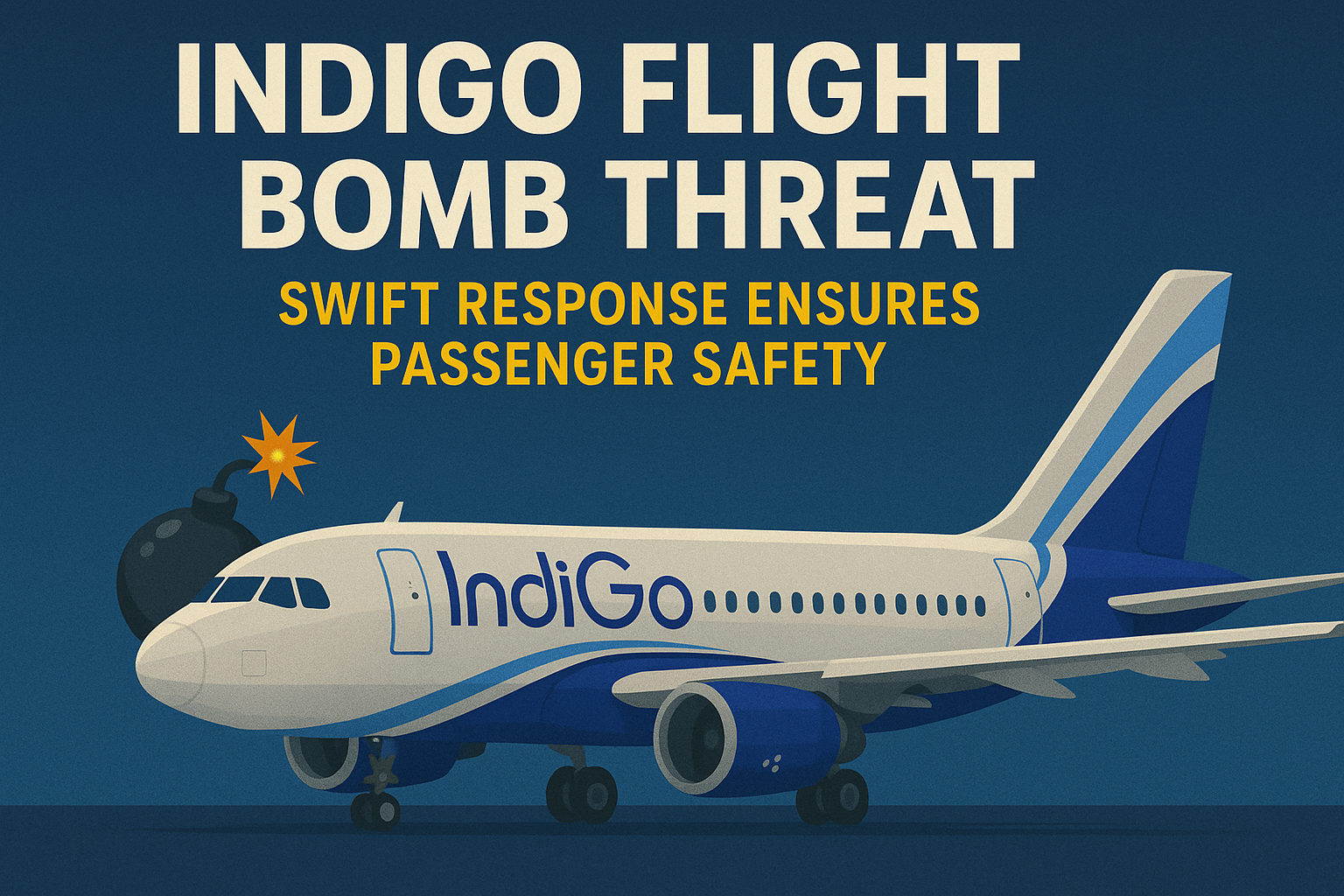
IndiGo Flight Bomb Threat: Swift Response Ensures Passenger Safety
A routine Mumbai-to-Delhi flight turned tense on Tuesday morning when IndiGo received a bomb threat onboard its Airbus A321 neo aircraft. The aircraft, operating as flight 6E 762, had nearly 200 passengers onboard. It landed safely in the national capital at 7:53 am, according to data from flight tracking platform Flightradar24.
Immediate Response to Threat
IndiGo confirmed that the crew reported a security threat while the aircraft was mid-air. Following aviation safety protocols, the airline alerted security agencies and relevant authorities without delay. Once the plane landed in Delhi, a full round of security checks was conducted. After thorough screening, authorities classified the threat as “non-specific.”
In a statement, the airline said, “A security threat was noticed onboard IndiGo flight 6E 762 operating from Mumbai to Delhi on 30 September 2025. Following the established protocol, we informed the relevant authorities immediately and fully cooperated with them in carrying out the necessary security checks before the aircraft was cleared for operations.”
The airline also emphasized that passenger comfort was taken into account throughout the episode. “We have made all efforts to minimize inconvenience to our customers including offering them refreshments and sharing regular updates,” an IndiGo spokesperson told PTI.
Heightened Alert Amid Recent Hoax Threats
The incident comes at a time when Indian airports and educational institutions have been receiving a wave of false bomb threats, causing widespread concern. Just a day earlier, Ahmedabad airport was the target of a threatening email. Officials quickly declared it a hoax after security checks revealed nothing suspicious. Police registered an FIR against the unidentified sender and began investigating the source of the message.
Inspector N.D. Nakum of Ahmedabad’s Airport Police Station told PTI that the probe indicated the same text was sent to multiple airports, government institutions, and private organizations across India. The threatening email read: “Message to administrators of airports and schools… bombs have been placed around your buildings and you have 24 hours to react, or face the blood pool… I am the leader of a terror group.”
In response, airport authorities immediately convened a virtual meeting of the “bomb threat committee.” The committee concluded that the message was a “non-specific threat,” meaning it did not refer to any precise location or credible detail about explosives.
Pattern of False Alarms Across India
The IndiGo incident follows a weekend where more than 300 schools and institutes in Delhi reported receiving similar bomb threats by email. Several airports, including Delhi Airport, were also targeted. Authorities later confirmed that all these messages were hoaxes.
At Jammu airport, security forces carried out a full anti-sabotage drill after another private airline received a bomb threat email. The Central Industrial Security Force (CISF) and local police conducted detailed checks without disrupting flight operations. As in other cases, no suspicious items were found.
Officials believe these repeated hoax threats are part of a coordinated attempt to create panic. While none have been proven credible so far, each report is being treated seriously, given the high risks involved in aviation and public safety.
Impact on Airlines and Passengers
For passengers, the incident on IndiGo flight 6E 762 was unsettling, but the crew’s quick action and clear communication helped keep the situation under control. Aviation experts note that non-specific bomb threats can be challenging because they require full-scale responses, even when the likelihood of actual danger is low.
While the incident caused some delays in operations, IndiGo’s decision to prioritize safety reassured travelers. The airline has also stepped up communication with passengers to ensure transparency during such sensitive situations.
Authorities Stay on High Alert
Aviation security in India has been under heightened alert in recent months. With multiple hoax threats emerging within a short span, authorities are working to trace the source of these disruptive emails. Cybercrime units have been engaged to identify the perpetrators, and international agencies may also be involved if the digital trail points outside India.
Officials stress that even when threats turn out to be false, each case must be handled with utmost seriousness. A senior CISF officer remarked, “The cost of ignoring a genuine threat is too high. Every call, every email, and every report has to be verified with full attention.”
A Call for Responsible Security Awareness
The IndiGo incident highlights the delicate balance between maintaining vigilance and avoiding unnecessary panic. Experts believe that greater public awareness is needed to discourage pranksters and malicious actors who exploit the fear of terrorism. Airlines, meanwhile, continue to focus on ensuring that safety measures are strictly implemented without severely inconveniencing passengers.
Conclusion
The bomb threat received by IndiGo flight 6E 762 on Tuesday morning proved to be a false alarm, but it underscored the seriousness with which India’s aviation sector treats such alerts. Thanks to the swift response of the airline and security agencies, the passengers remained safe, and the aircraft was cleared for future operations.
As authorities investigate the broader wave of hoax threats targeting airports and schools, the incident serves as a reminder of the need for vigilance, cooperation, and public responsibility. For the nearly 200 passengers on board, the day began with anxiety but ended with relief—proof once again that safety protocols, when followed with discipline, protect lives even in the face of uncertainty.




